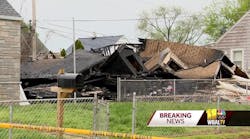The past decade has given rise to a serious threat to firefighter safety. It is not a terrorist sleeper cell, nor is it a newly brewed hazardous material. In fact, it isn't even present on the fireground. The threat of which I am speaking is the growing gap between what incident commanders have come to expect and what many dispatch centers can actually deliver. Some of the factors discussed in this column have been presented previously; however, the intention here is to focus on these factors with regard to their direct impact upon the wellbeing of first responders.
While issues can arise from dispatch centers being left out of the master-planning loop, there are day-to-day concerns that can also be underplayed or ignored. The most pressing of these concerns is the growing expectation that dispatchers will be monitoring every active emergency call. While this is sometimes possible, most of the time it is not. Here's why.
Since the early 1990s, there has been a move away from conventional channels toward trunked radio systems. While we can debate the merits of these systems for fire service use, there is no debate that they have reduced congestion in the field. Where single channels once existed, there are now often dozens of talk groups. In the case of the center that I manage, this has increased our original five to the current 58. These virtual channels not only enable unit-to-unit interoperability between agencies, they also allow for individual incidents to be assigned to their own channel. Where incident commanders formerly had to be concerned about having a critical transmission stepped on or interfered with by a neighboring department or company, they are now virtually assured of a clear communications pathway.
Many trunking networks have been designed to accommodate a wide range of options regarding who can talk to whom, and with good reason: communications play a large role in first responder safety. Unfortunately, this design has transferred the congestion and confusion from the field into the dispatch center. While I have seen some variants, the typical radio console has two speakers - the "select" speaker for the single channel that the dispatcher is actively working and the "unselect" speaker for everything else. That means that every other channel or talk group - regardless of the number or level of activity - is pumped through a solitary three-inch speaker. Although there are individual volume controls for each frequency, they are of little value when it's busy. Try to imagine a scanner that instead of skipping from channel to channel, grabs the active audio from all of them and plays it back simultaneously and you have a good idea what can occur.
In addition to technology changes, there have been changes in the way that the fire service does business. Responding to medical calls not only increases the number of runs that many companies make, it also adds dispatches. Centers that provide strictly fire department communications have added these runs for every agency they serve. The cumulative effect can be staggering. For multi-discipline centers, fire first responder calls mean that one more unit is now added to every EMS run; a unit that must be dispatched and tracked by someone. If each one of these dispatches is assigned its own talk group, which frequently occurs in 800 Mhz systems, it creates a situation whereby it is virtually impossible to actively monitor all calls, unless staffing levels support one dispatcher for every two units. Obviously, this never happens.
Some agencies address this issue by declaring that only certain incident types warrant direct oversight. However, this logic needs further examination. To say that emergency medical responses are less dangerous to personnel than other calls ignores the potential for domestic violence situations, combative patients and unsecured crime scenes. The overall perception seems to be that structure fires are most deserving of attention; however, firefighter fatality figures from 2006 suggest that you are equally at risk while responding. Since some of these vehicular incidents involve personal autos, they occur when the firefighter is not being monitored by fire alarm personnel. In fact, the largest number of firefighter deaths - almost 40% - occurred away from the fireground in situations where status is not normally tracked.
Proponents of monitoring structural alarm activity often point to historical or anecdotal information of situations where dispatchers did (or did not) monitor transmissions from the scene, and how it affected the outcome. Many refer to the Hackensack, NJ, car dealership fire of 1978 and mistakenly report that the dispatch center heard calls for help from trapped firefighters that those on the scene did not. Unfortunately, this is not the case. Both here, and in an eerily similar incident in Syracuse, NY, a decade earlier, "Mayday" transmissions were intercepted by the scanners of civilians and non-fire service personnel who then notified authorities. Why didn't the dispatchers get these messages? Two possible scenarios are that the radio systems were lacking or that the personnel on duty had their hands - and ears - full with managing these major emergencies as well as other ongoing calls.
This brings us to the issue of multi-tasking. Even where facilities have dedicated call-taking and dispatch personnel, it is rare that a dispatcher is assigned to a single incident. And the management of that single incident involves more than listening to one channel. There may be multiple frequencies in use, telephone calls to make and requests to verify. In short; there's a lot going on in the center when there's a lot going on in the field. Chances are, however, that the same dispatcher may also be monitoring other incidents in progress that could turn critical at any moment.
Another scenario is that the dispatcher is also responsible for handling inbound telephone calls. Those calls are becoming more numerous and more time consuming. The fire service's foray into the world of emergency medicine has accompanied a similar journey into emergency medical dispatch (EMD). Using one of several approved protocols, telecommunicators follow an unforgiving script to classify, prioritize and provide advice on inbound calls. This takes time. It also puts the call taker in the position of dividing his or her attention between monitoring the welfare of units in the field and properly diagnosing the patient.
The predominance of wireless 911 calls also contributes to more time on the telephone, as accurate addresses must often be obtained through vigorous questioning. Even automatic cellular location technology isn't really automatic. There may be a gap of 20 seconds or more between the time a call is answered and the data is received. And, even then, the receipt of that data may depend on a manual query. Added to this load is the ever-increasing number of requests from non-English-speaking callers that must be connected to translator services. These all compete for critical time and focus.
Unfortunately, competition for focused attention may not be such a good thing. A study recently released by Vanderbilt University suggests that people are incapable of multi-tasking. In fact, what we often pass off as our ability to walk and chew gum at the same time is actually a rapid swapping of our brain between one task and another. Instead of sharing, we alternate. This, in times of crisis, may be as catastrophic as falling asleep at the wheel.
Compounding these problems is that as demands increase, nationwide dispatcher shortages continue. Because of this, there is often a considerable difference between authorized strength and real staffing levels. While the National Fire Protection Association (NFPA) is fairly specific about the resources required to mount an interior attack, it is less definitive when it comes to communications. Although two people are required for moderate call volumes, the rest of the formula is predicated on call-handling targets. Since these statistics are measured on a monthly, rather than a per-incident basis, it equates to basing your field strategy on your average number of responders instead of how many you currently have on scene.
The relative level of experience in many facilities is also dropping. With telecommunicator turnover rates in many areas exceeding 20%, the impact doubles when the number of vacancies and the number of employees in training are combined. If these trends continue, some centers may be forced to fall back to the equivalent of making an exterior attack, by providing only basic services such as call answering and dispatch.
It is without question that fire departments benefit from operating on channels that are monitored. However, current reality indicates that this function is more reliably carried out by the safety officer and/or the rapid intervention team. And if the channel cannot adequately be monitored on scene for technical reasons or because of a lack of personnel, serious thought must be given to the propriety of the tactics being used.
Committing resources who cannot hear an order to withdraw or send an acknowledged "Mayday" to an interior structural attack, hazardous materials hot zone, wildfire deployment or any other applicable situation is a critical lapse in judgment. Trusting that these lifesaving calls will be heard by dispatchers who are working with the same equipment, and in most cases, are significantly overloaded, is another. And both of these mistakes potentially carry with them the ultimate penalty.
BARRY FUREY, a Firehouse contributing editor, is director of the Raleigh-Wake County Emergency Communications Center in North Carolina. During his 35-year public safety career, he has managed 911 centers and served as a volunteer fire officer in three other states. In 2002, Furey chaired the Association of Public-safety Communications Officials International (APCO) conference in Nashville, TN, and in 2005 he received an APCO life membership for his continued work in emergency communications.





